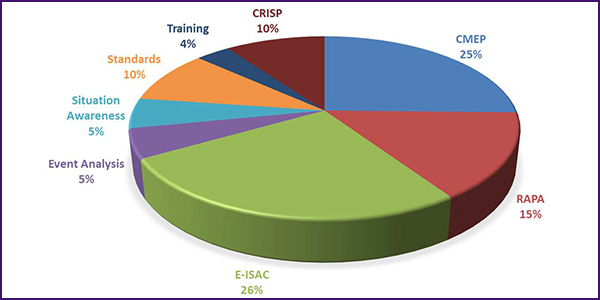FERC has accepted proposed revisions to seven NERC reliability standards submitted earlier this year under Project 2017-07 (Standards alignment with registration) (RD20-4).
The commission on Monday also approved the 2021 business plans and budgets for NERC, the regional entities and the Western Interconnection Regional Advisory Body (WIRAB) (RR20-6).
NERC began Project 2017-07 in order to update reliability standards affected by the risk-based registration (RBR) initiative approved by FERC in 2015 (RR15-4), which removed two functional categories — purchasing-selling entity and interchange authority — from the ERO’s compliance registry because “the commercial nature of these categories [posed] little or no risk to the reliability of the bulk power system.” The initiative also resulted in the creation of a new registration category, underfrequency load shedding (UFLS)-only distribution provider (DP).
Project 2017-07 was originally proposed in order to remove references to the discontinued categories and add UFLS-only DPs where needed to all families of NERC standards. However, during the course of the project, many of the standards were updated by other projects and removed from 2017-07’s scope. The final list of standards to be updated was approved by NERC’s Board of Trustees at its meeting in February. (See “Standards Actions,” NERC Board of Trustees Briefs: Feb. 6, 2020):
- FAC-002-2 — Facility interconnection studies, replaced by FAC-002-3
- IRO-010-2 — Reliability coordinator data specification and collection, replaced by IRO-010-3
- MOD-031-2 — Demand and energy data, replaced by MOD-032-3
- MOD-033-1 — Steady-state and dynamic system model validation, replaced by MOD-033-2
- NUC-001-3 — Nuclear plant interface coordination, replaced by NUC-001-4
- PRC-006-3 — Automatic underfrequency load shedding, replaced by PRC-006-4
- TOP-003-3 — Operational reliability data, replaced by TOP-003-4
In its petition to FERC, NERC told the commission that changes were restricted to updating references to the affected organizations and that “no substantive revisions were made to the proposed reliability standards’ underlying requirements.”
Budgets Continue Focus on Cost Control
The ERO Enterprise business plans and budgets approved by FERC reflect NERC’s decision earlier this year to keep spending and assessments flat in light of the economic uncertainty arising from the COVID-19 pandemic. In its final budget released in August, NERC set its proposed 2021 budget at $82.9 million, up $203,000 from 2020. (See NERC Aims for Cost Control in 2021 Budget.) The total ERO Enterprise budget for 2021, including the REs and WIRAB, was projected at $211.2 million.
The final budget keeps to this target by, among other things, holding its 2021 staffing level to 213.38 full-time-equivalent employees, the same level as 2020. Personnel costs are expected to rise overall to $48.2 million, however, because of rising salaries and medical insurance premiums. Operating expenses are also up because of increased software support expenses for products such as the ERO Secure Evidence Locker.
These rises were offset by savings in such areas as meetings and travel, down 33.7% at $2.2 million because of continuing pandemic-related travel restrictions, and fixed assets, down 29.5% to $3.3 million. Spending on the Electricity Information Sharing and Analysis Center (E-ISAC) is expected to drop by 4.8% as well stemming from the “re-evaluation of the E-ISAC strategic plan and optimization of current resources.”
In its budget filing, NERC also disclosed $1 million in penalties that it received between July 1, 2019, and June 30, 2020. The organization requested FERC allow it to deposit the funds in its assessment stabilization reserve, which the commission granted. Following the deposit NERC’s reserve will stand at $2.5 million.
Despite the short-term focus on cost savings, NERC has warned that budget hikes are likely as pandemic restrictions are loosened and the industry resumes normal business. (See NERC: Post-COVID Budget Rises Likely.) Earlier this year, the organization predicted budgets of $87 million and $91.4 million for 2022 and 2023, respectively.





